Abstract
OBJECTIVE: To examine the effect of case mix-adjusted reimbursement policy and market factors on nursing home performance. DATA SOURCES AND STUDY SETTING: Data from Medicaid certification inspection surveys, Medicaid cost reports, and the Kentucky State Center for Health Statistics for the years 1989 and 1991, to examine changes in nursing home performance stemming from the adoption of case mix-adjusted reimbursement in 1990. STUDY DESIGN: In addition to cross-sectional regressions, a first-difference approach to fixed-effects regression analyses was employed to control for facility differences that were essentially fixed during the survey years and to estimate the effects of time-varying predictors on changes in facility expenditures, efficiency, and profitability. PRINCIPAL FINDINGS: Facilities that increased the proportion of Medicaid residents and eliminated excess capacity experienced higher profitability gains during the beginning phase of case-mix reimbursement. Having a heavy-care resident population was positively related to expenditures prior to reimbursement reform, and it was negatively related to expenditures after the case-mix reimbursement policy was introduced. While facility-level changes in case mix had no reliable influence on costs or profits, nursing homes showing an increased prevalence of poor-quality nursing practices exhibited increases in efficiency and profitability. At the market level, reductions in excess or empty nursing home beds were accompanied by a significant growth in home health services. Moreover, nursing homes located in markets with expanding home health services exhibited higher increases in costs per case-mix unit. CONCLUSIONS: Characteristics of the reimbursement system appear to reward a cost minimization orientation with potentially detrimental effects on quality of care. These effects, exacerbated by a supply-constrained market, may be mitigated by policies that encourage the expansion of home health service availability.
Full text
PDF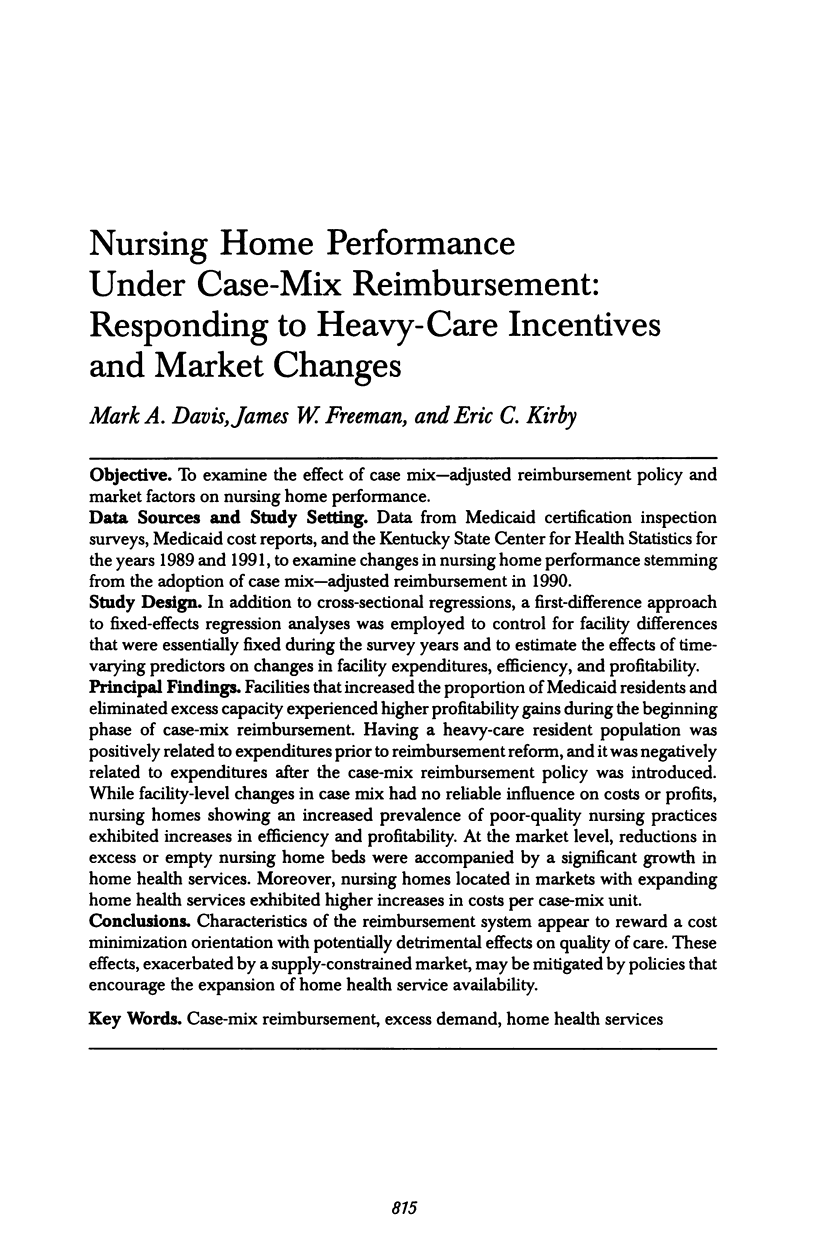
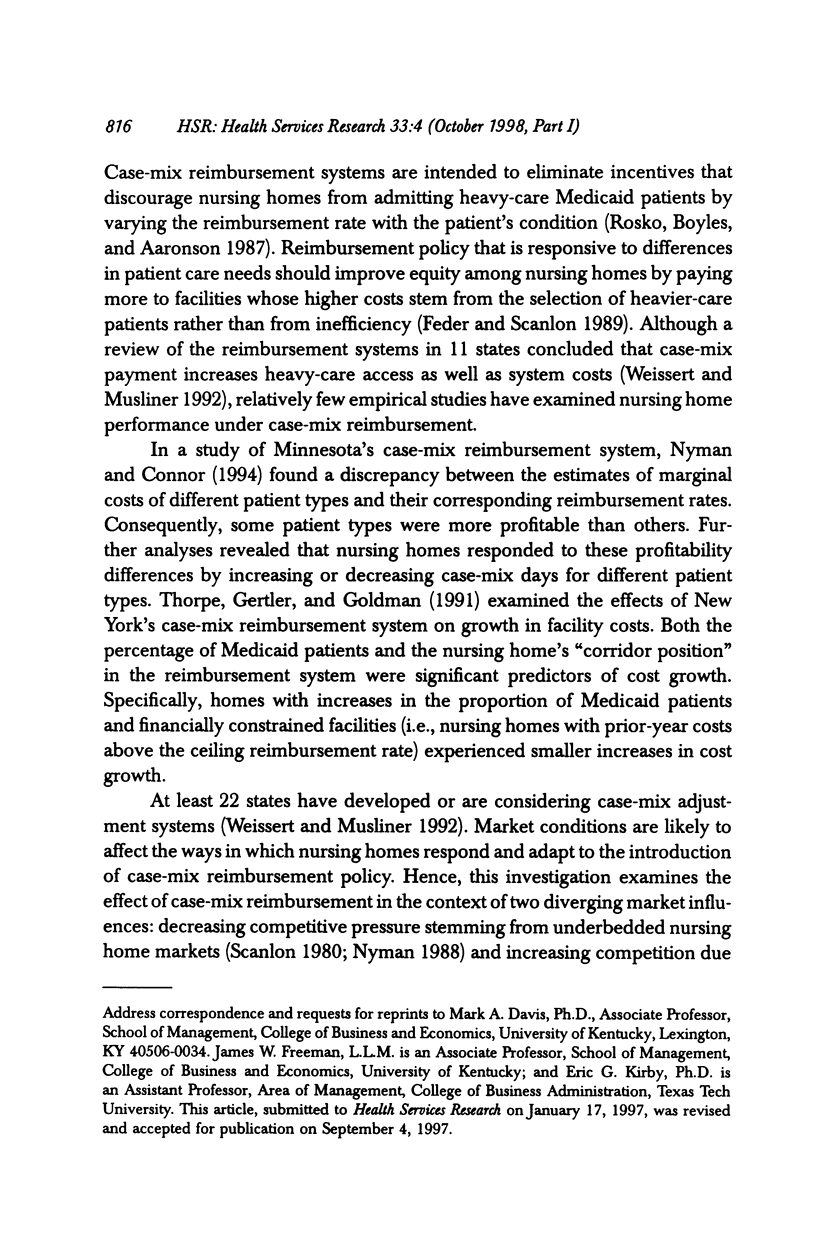
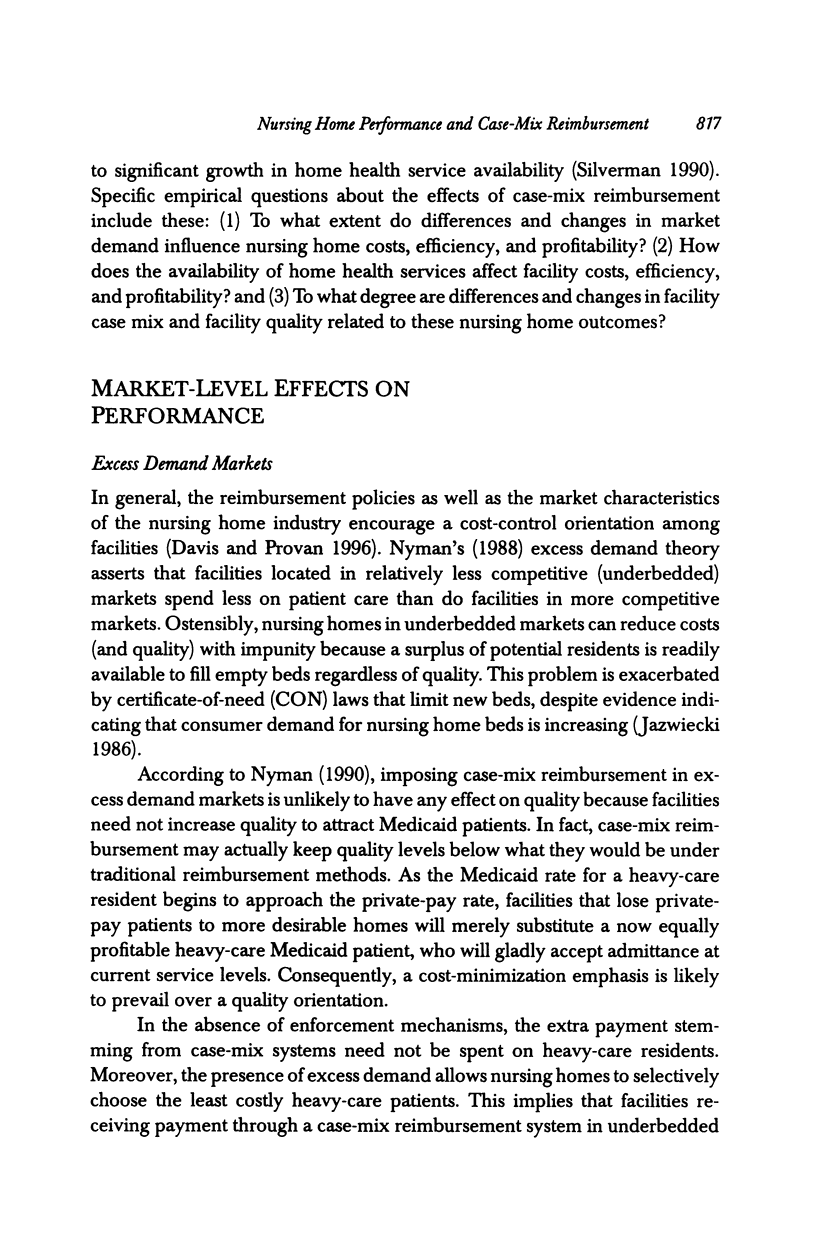
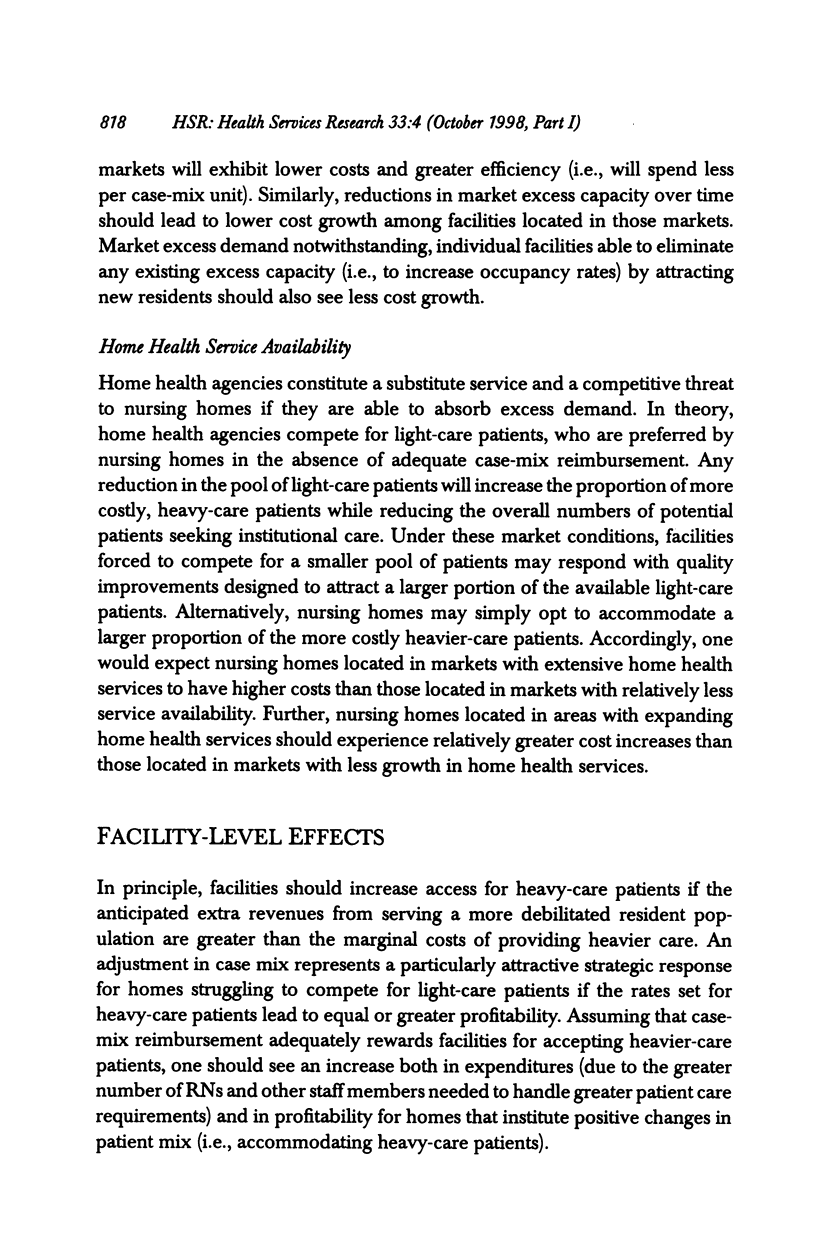
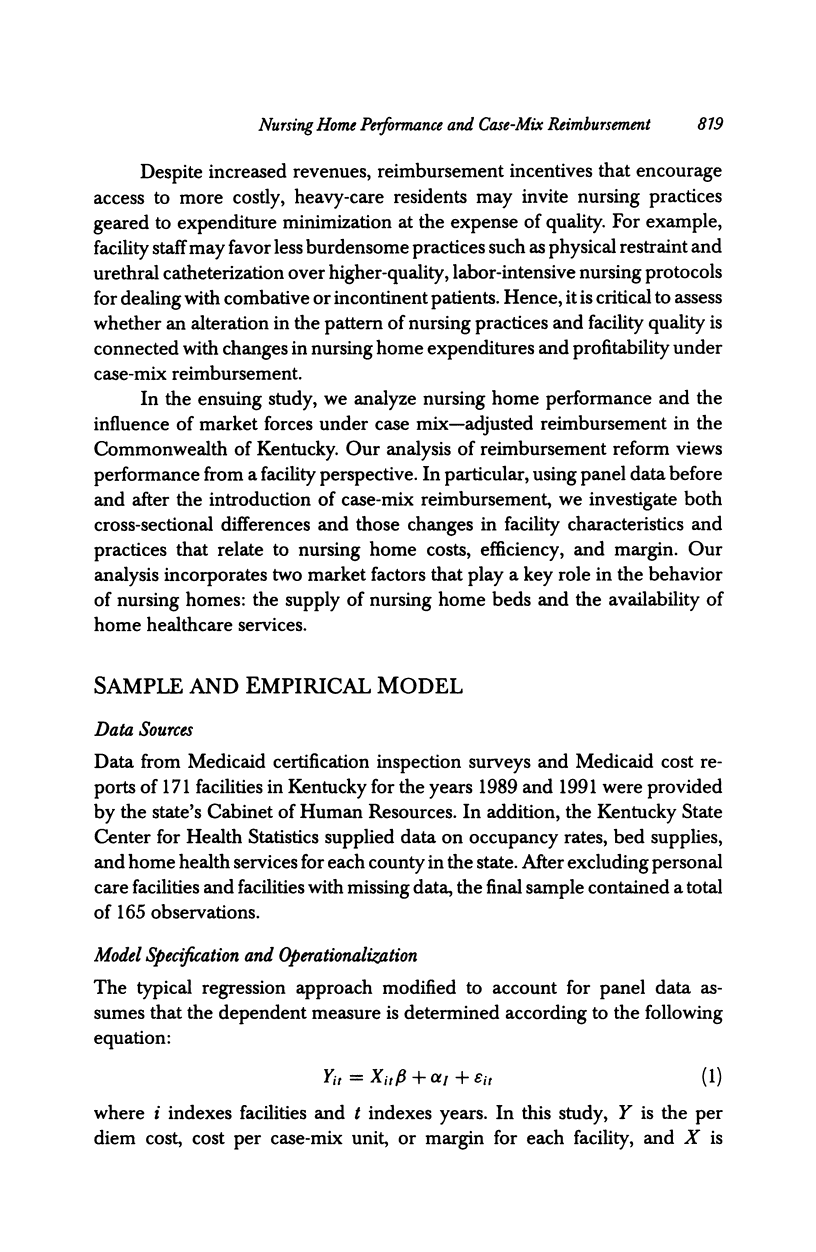
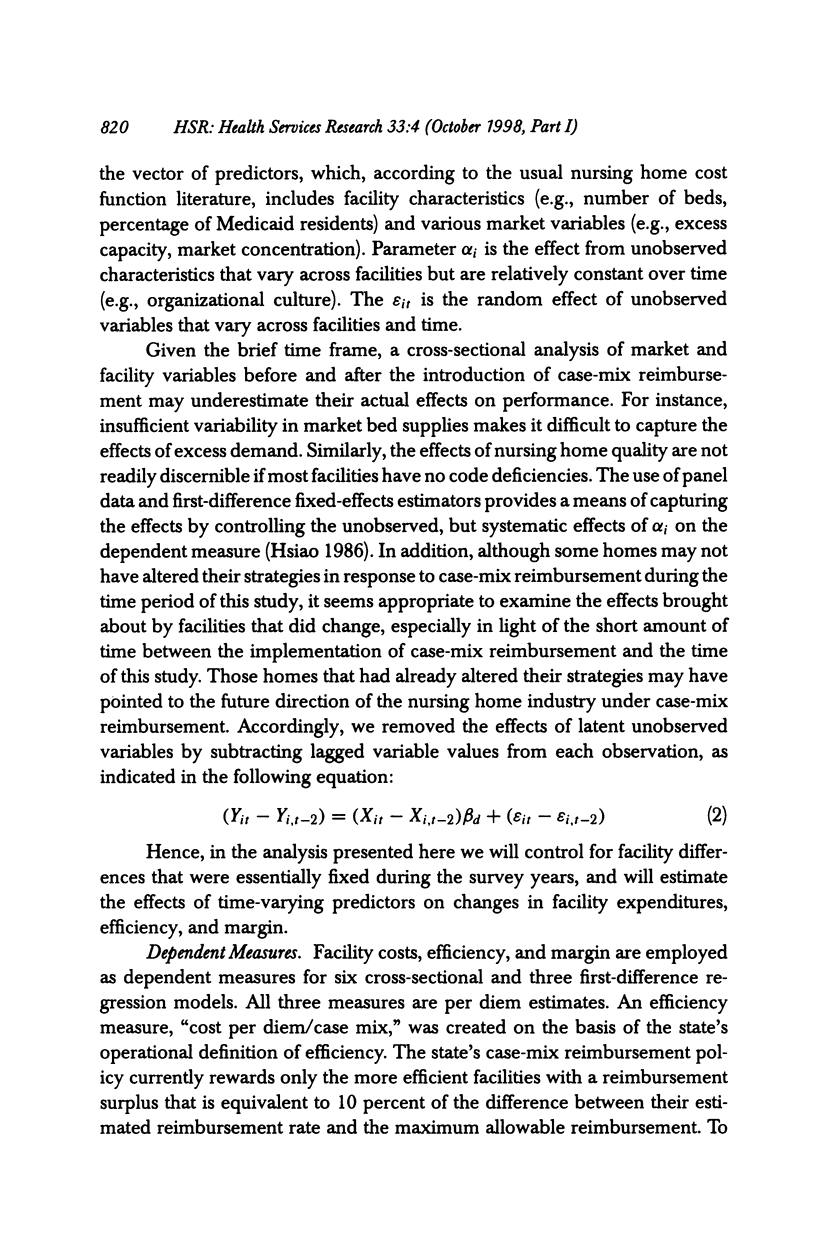
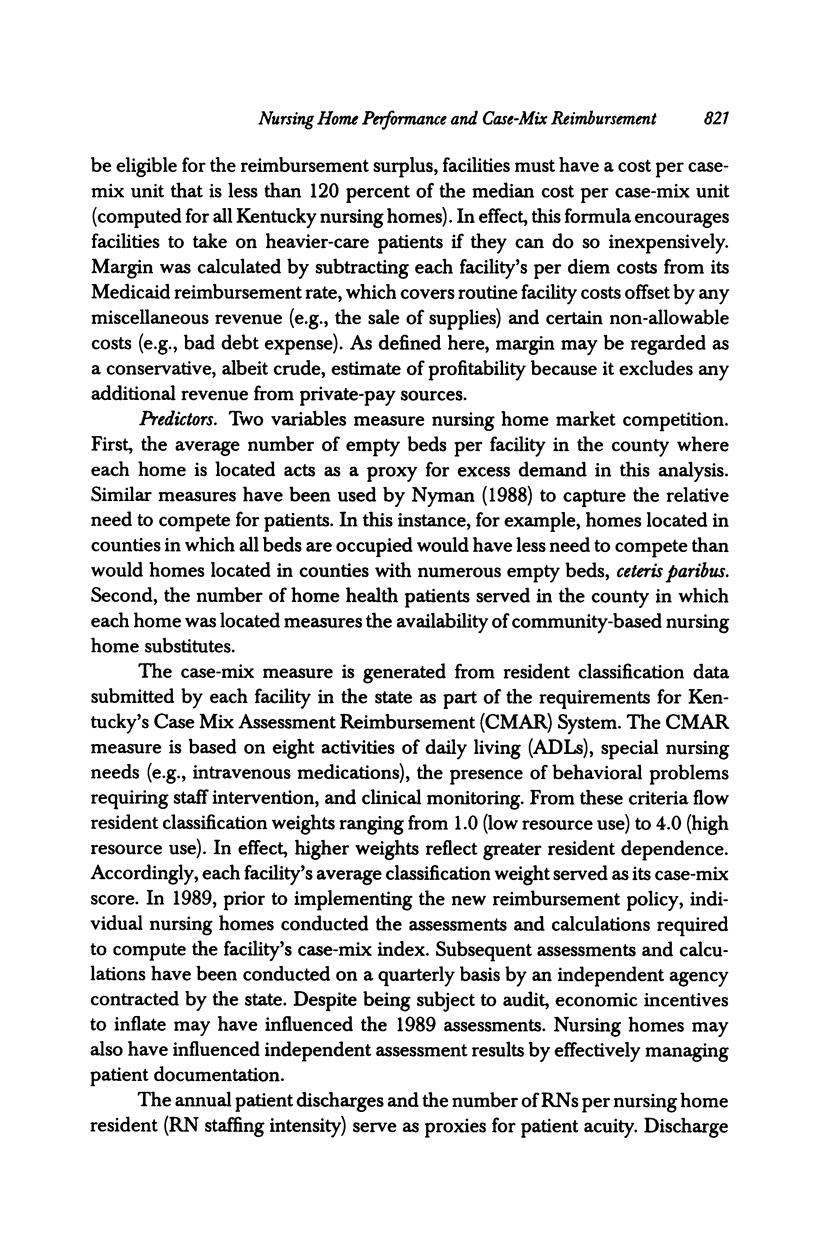
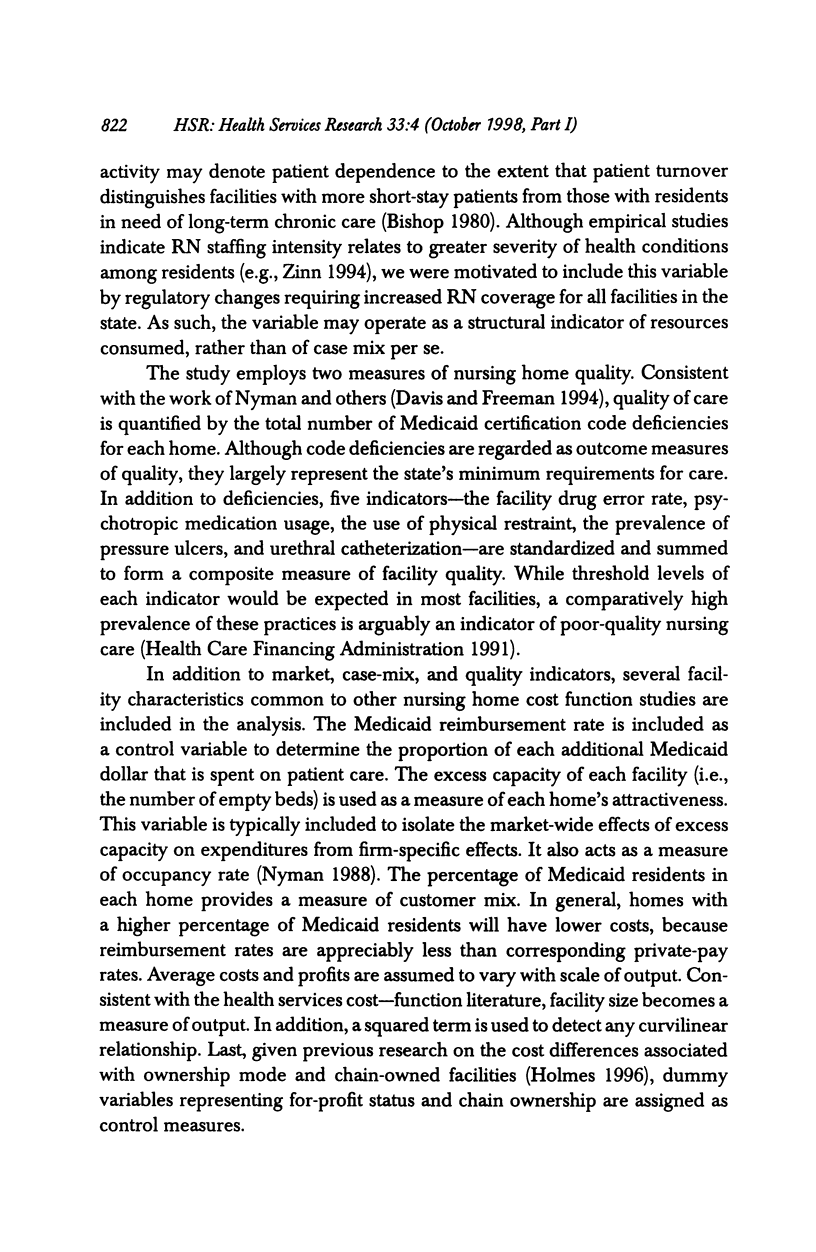
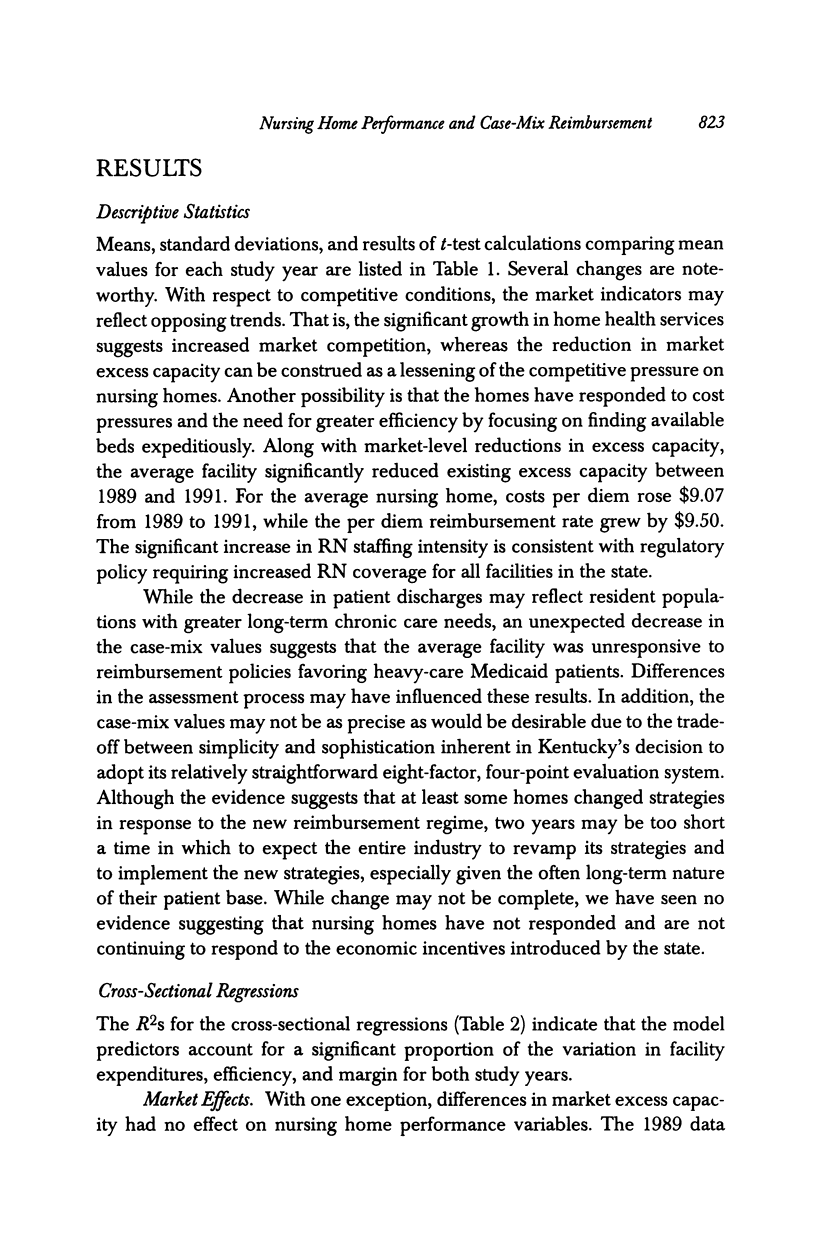
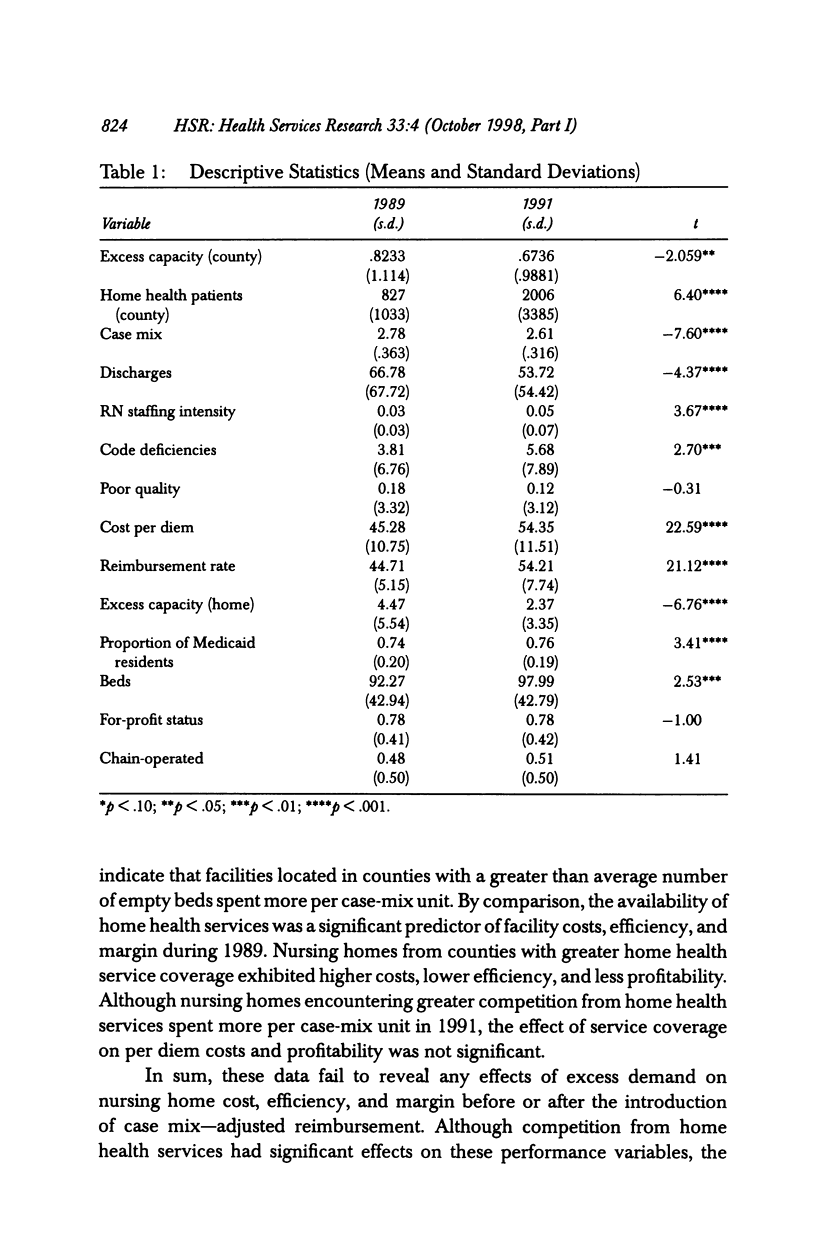

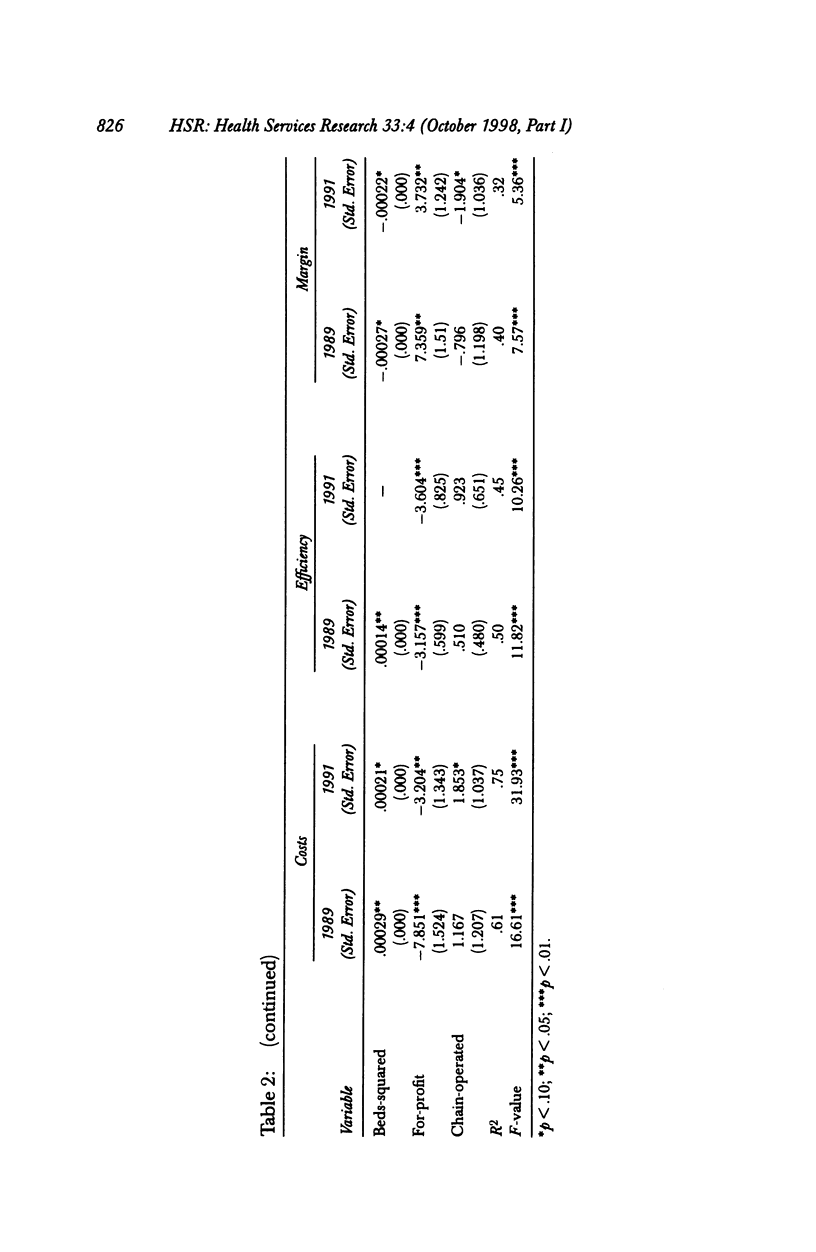
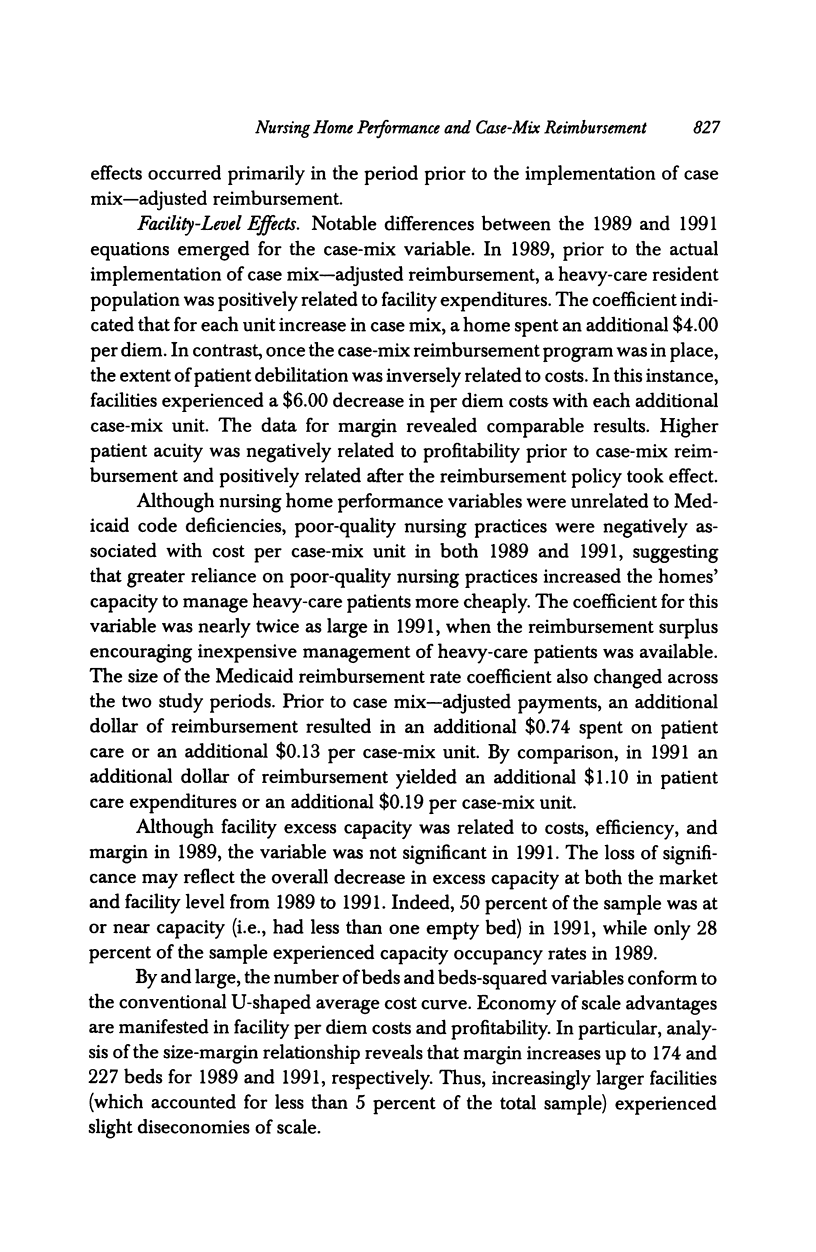
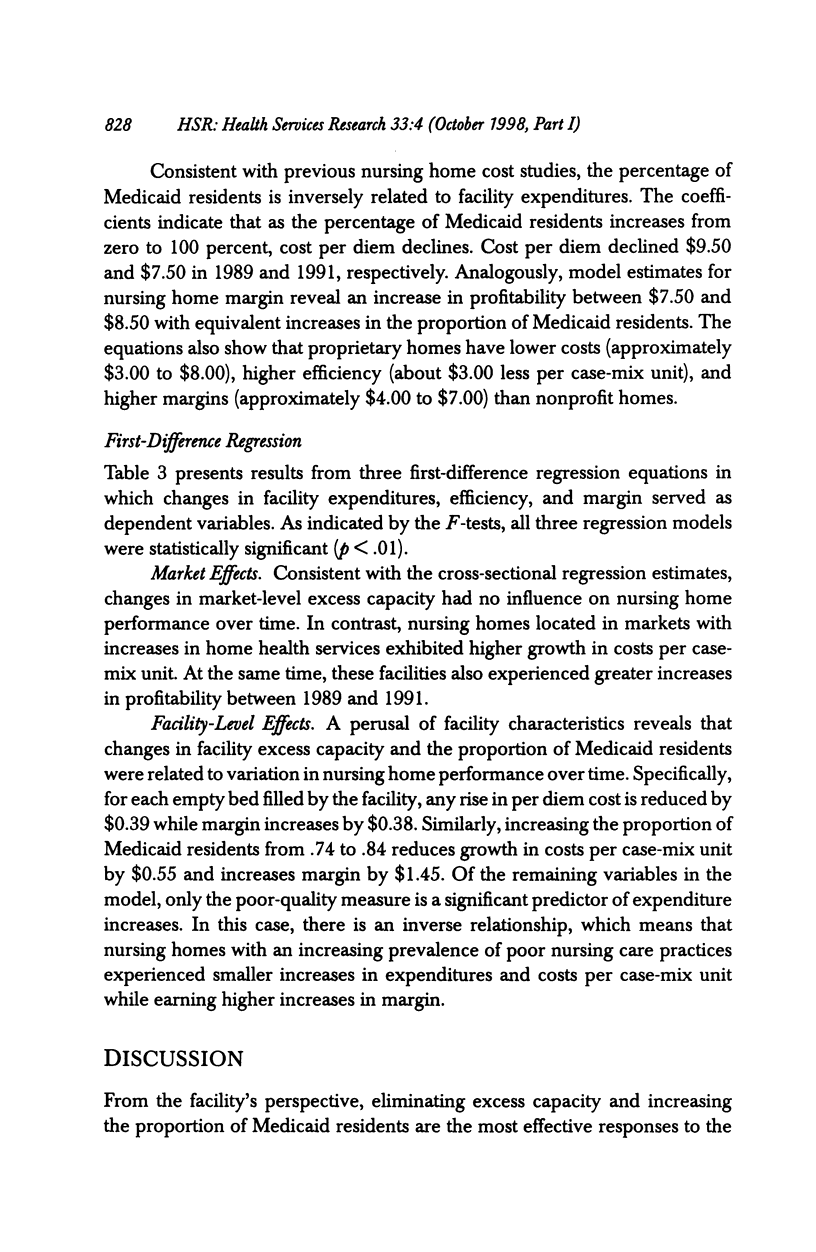
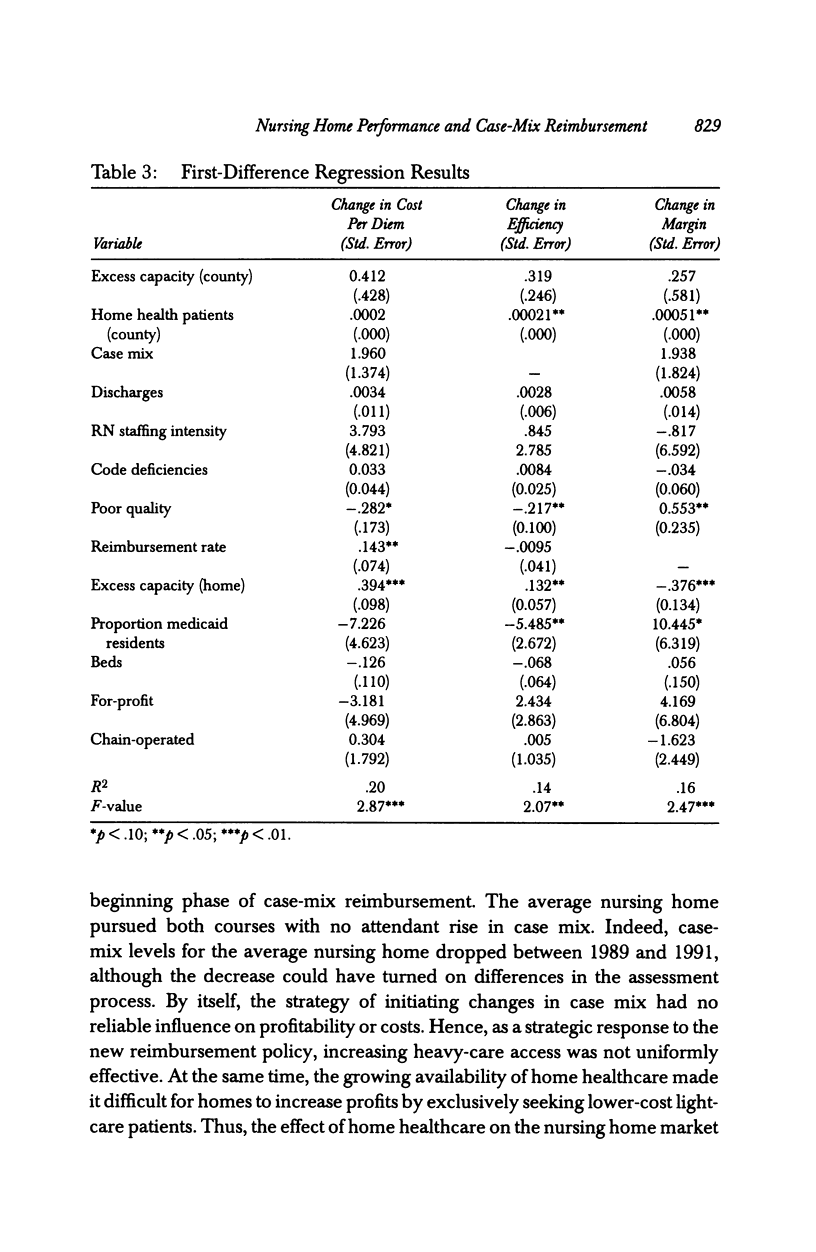
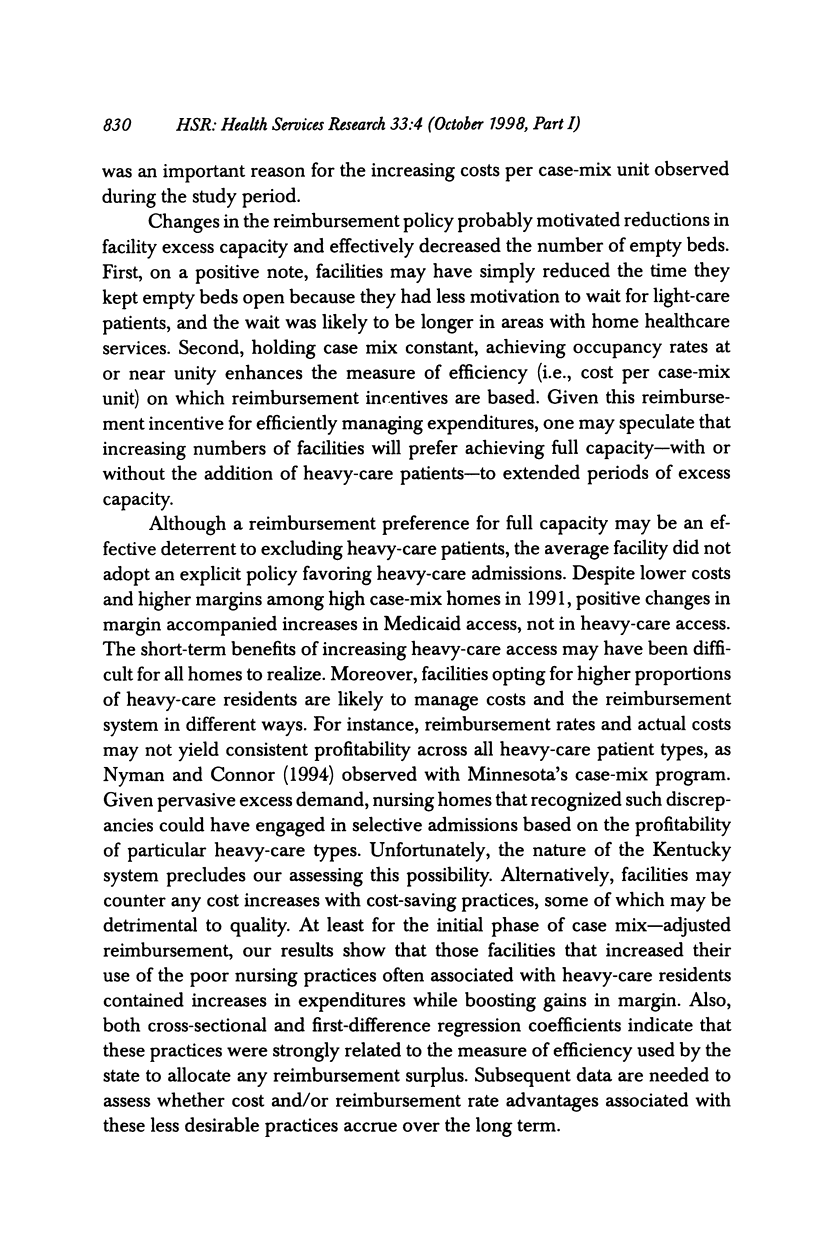
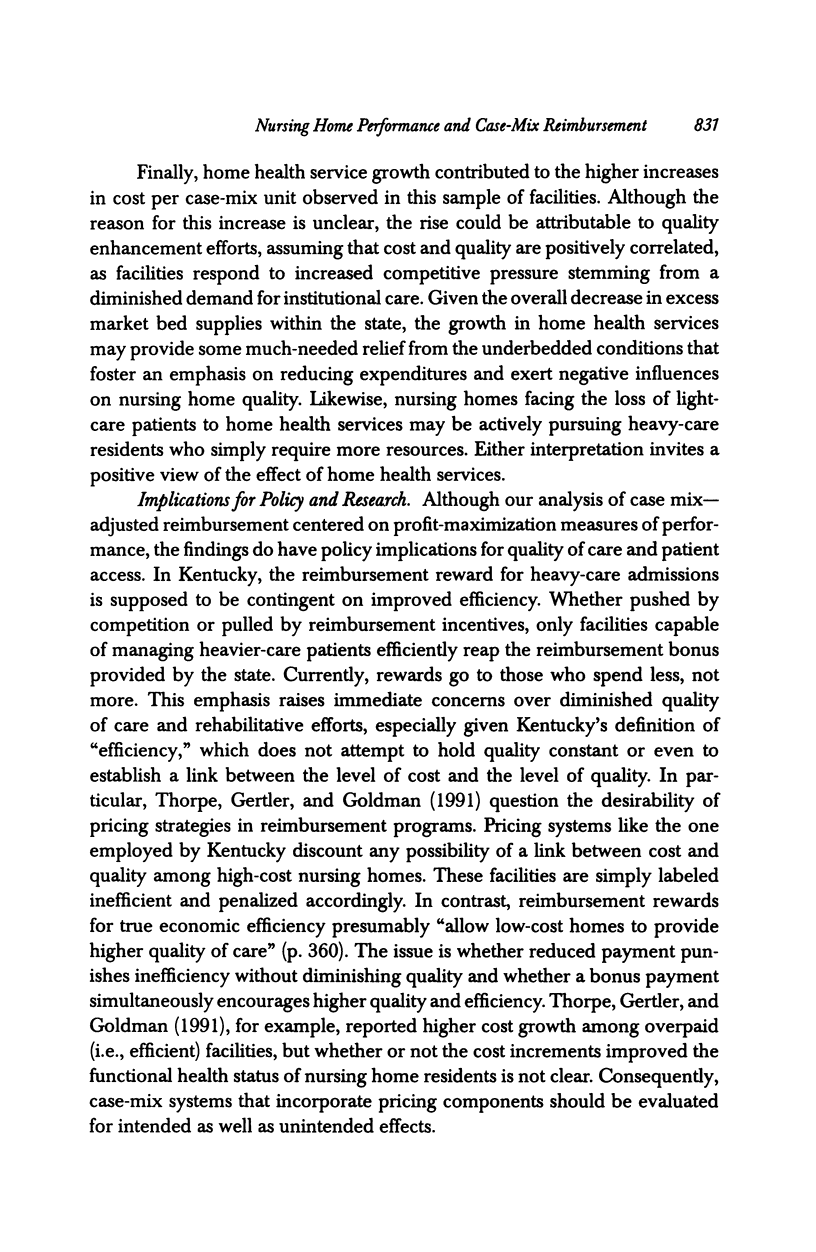
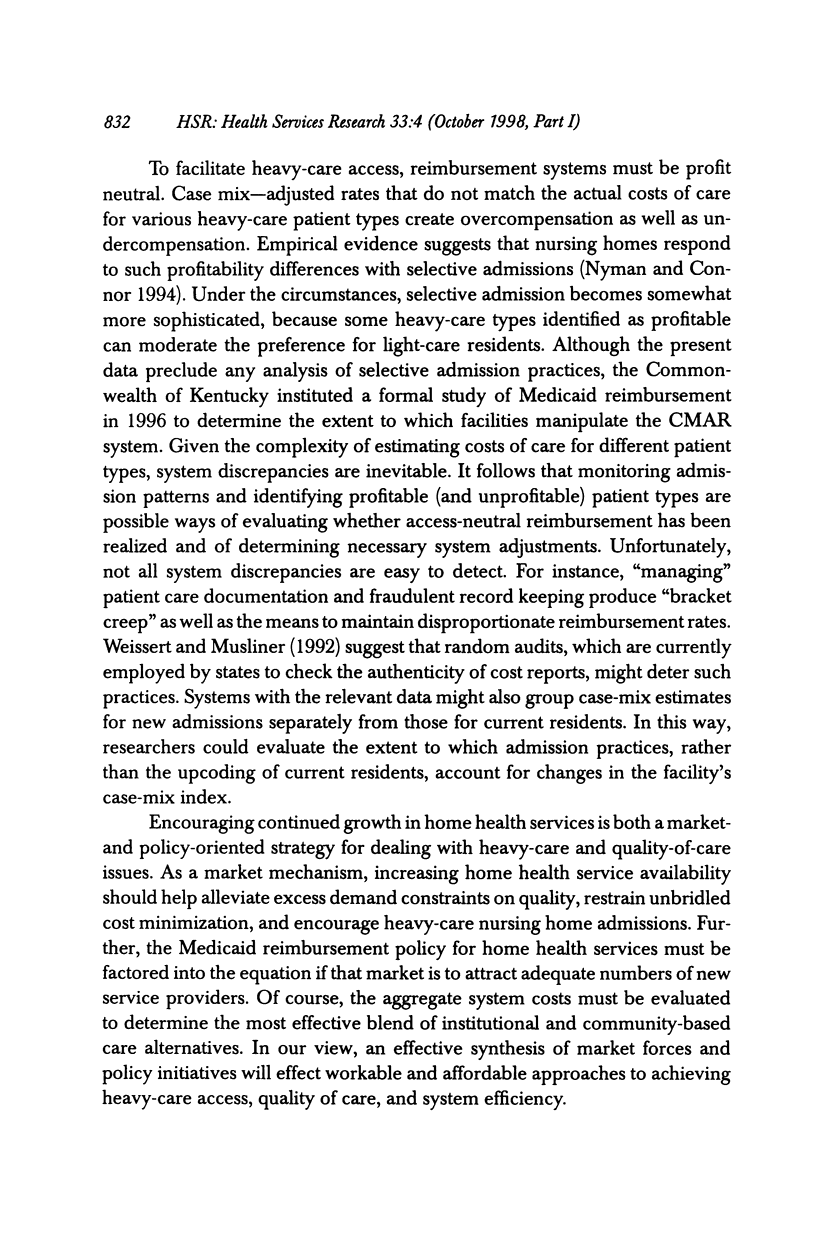
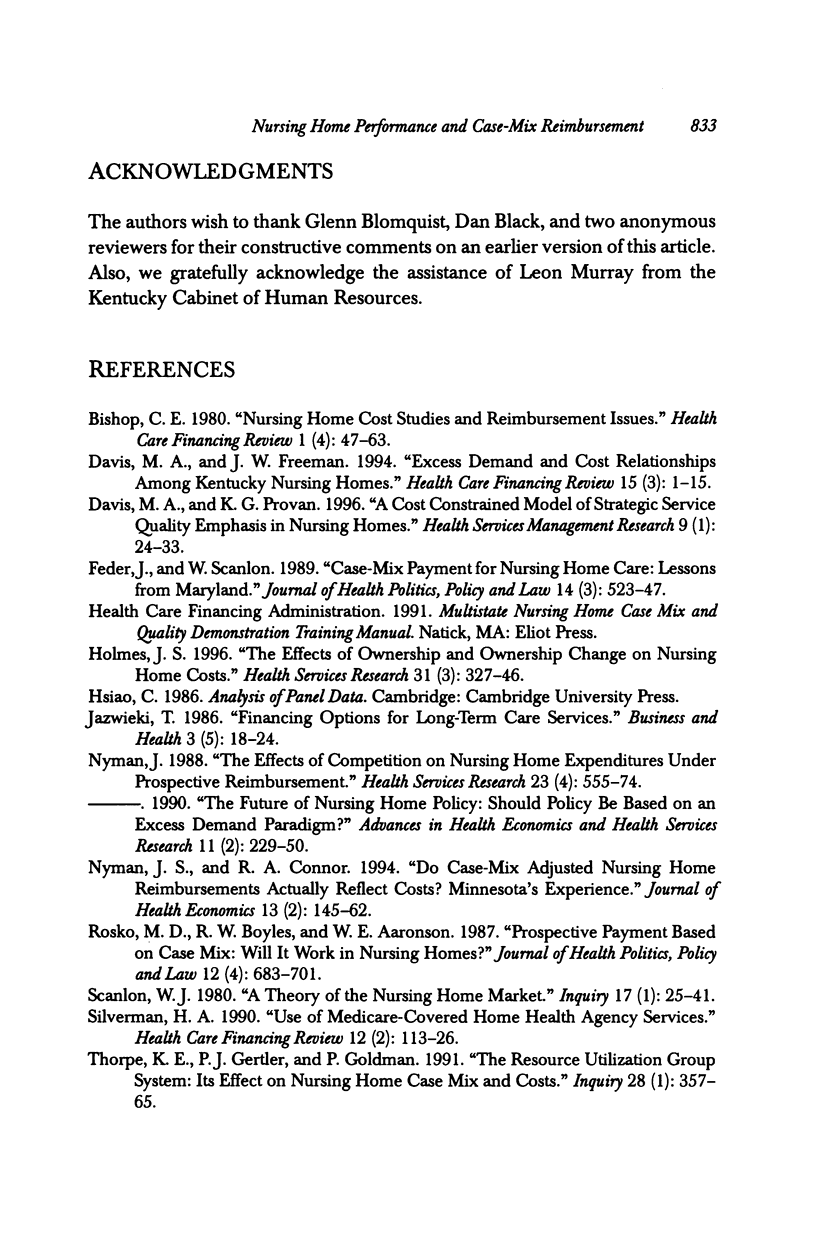
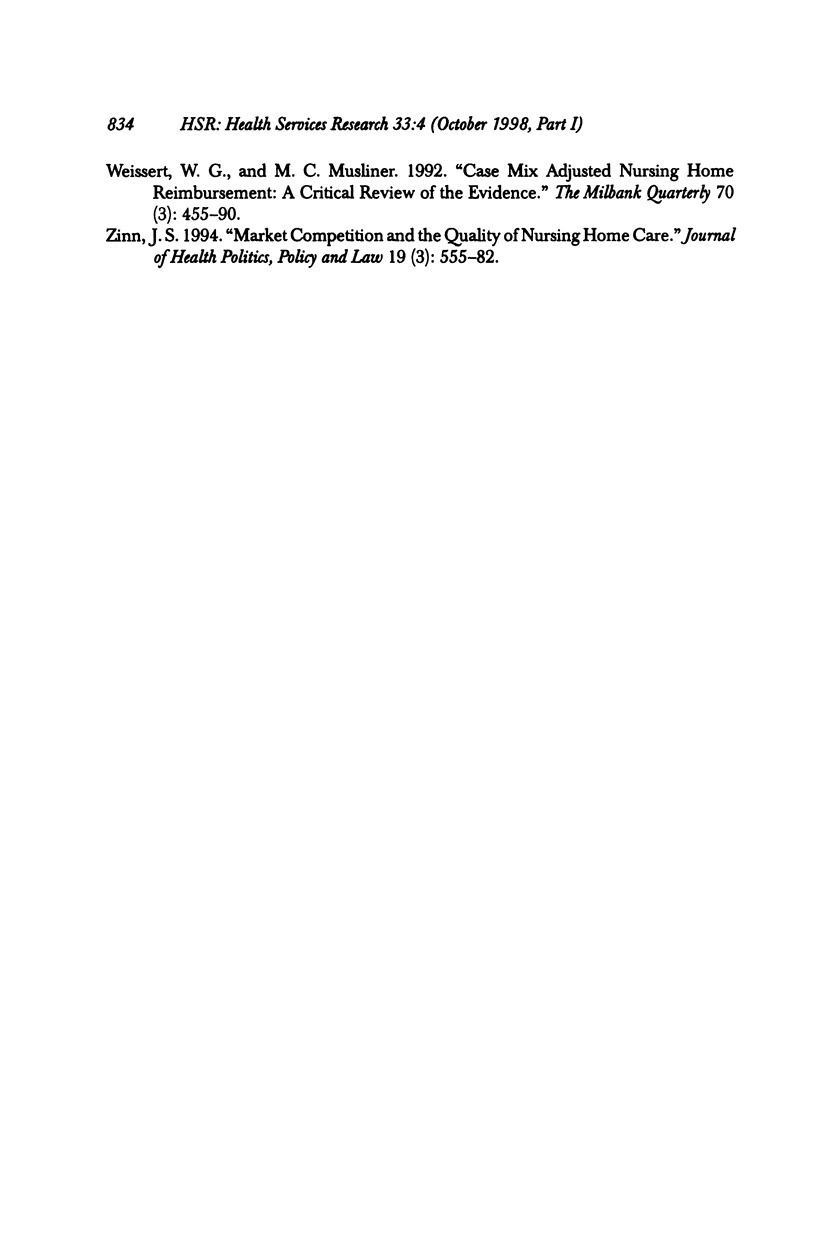
Selected References
These references are in PubMed. This may not be the complete list of references from this article.
- Bishop C. E. Nursing home cost studies and reimbursement issues. Health Care Financ Rev. 1980 Spring;1(4):47–64. [PMC free article] [PubMed] [Google Scholar]
- Davis M. A., Provan K. G. A cost-constrained model of strategic service quality emphasis in nursing homes. Health Serv Manage Res. 1996 Feb;9(1):24–33. doi: 10.1177/095148489600900103. [DOI] [PubMed] [Google Scholar]
- Feder J., Scanlon W. Case-mix payment for nursing home care: lessons from Maryland. J Health Polit Policy Law. 1989 Fall;14(3):523–547. doi: 10.1215/03616878-14-3-523. [DOI] [PubMed] [Google Scholar]
- Holmes J. S. The effects of ownership and ownership change on nursing home industry costs. Health Serv Res. 1996 Aug;31(3):327–346. [PMC free article] [PubMed] [Google Scholar]
- Nyman J. A., Connor R. A. Do case-mix adjusted nursing home reimbursements actually reflect costs? Minnesota's experience. J Health Econ. 1994 Jul;13(2):145–162. doi: 10.1016/0167-6296(94)90021-3. [DOI] [PubMed] [Google Scholar]
- Nyman J. A. The effect of competition on nursing home expenditures under prospective reimbursement. Health Serv Res. 1988 Oct;23(4):555–574. [PMC free article] [PubMed] [Google Scholar]
- Rosko M. D., Broyles R. W., Aaronson W. E. Prospective payment based on case mix: will it work in nursing homes? J Health Polit Policy Law. 1987 Winter;12(4):683–701. doi: 10.1215/03616878-12-4-683. [DOI] [PubMed] [Google Scholar]
- Scanlon W. J. A theory of the nursing home market. Inquiry. 1980 Spring;17(1):25–41. [PubMed] [Google Scholar]
- Silverman H. A. Use of Medicare-covered home health agency services, 1988. Health Care Financ Rev. 1990 Winter;12(2):113–126. [PMC free article] [PubMed] [Google Scholar]
- Thorpe K. E., Gertler P. J., Goldman P. The resource utilization group system: its effect on nursing home case mix and costs. Inquiry. 1991 Winter;28(4):357–365. [PubMed] [Google Scholar]
- Weissert W. G., Musliner M. C. Case mix adjusted nursing-home reimbursement: a critical review of the evidence. Milbank Q. 1992;70(3):455–490. [PubMed] [Google Scholar]
- Zinn J. S. Market competition and the quality of nursing home care. J Health Polit Policy Law. 1994 Fall;19(3):555–582. doi: 10.1215/03616878-19-3-555. [DOI] [PubMed] [Google Scholar]


